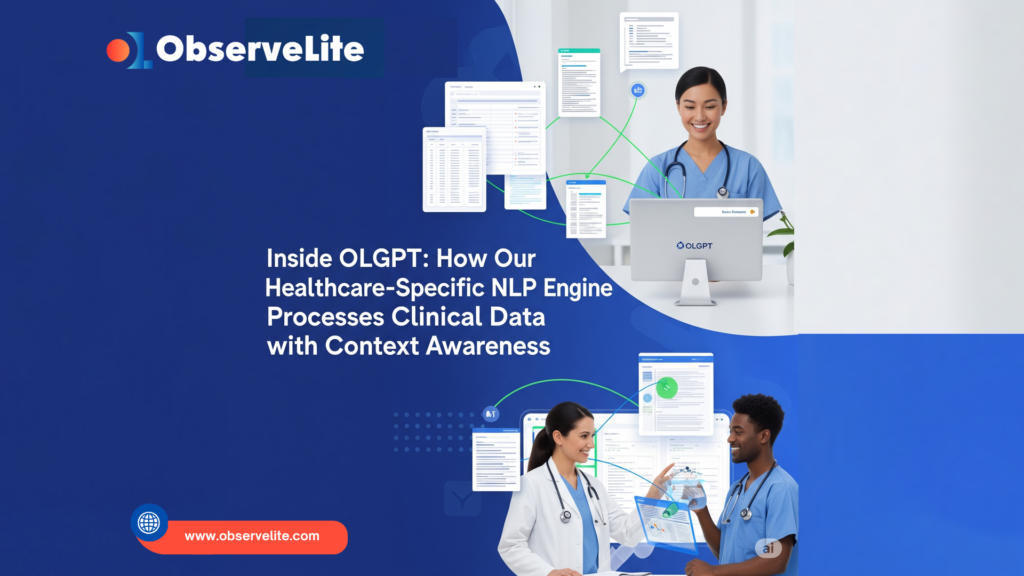Introduction
In a clinical setting, language is messy—but critical. A single misinterpreted phrase like “no known allergies” or “rule out MI” can mean the difference between clarity and chaos. Most EMRs are filled with shorthand, speech-to-text errors, or fragmented notes.
That’s where OLGPT stands out.
Unlike generic AI tools, OLGPT is purpose-built for healthcare—designed to understand medical language, recognize sensitive terms, and deliver safe, structured insights in real time.
In this blog, we’ll explore how our healthcare-specific NLP engine works, how it compares to generic models, and why it’s becoming essential for everything from outpatient documentation to smart clinical decision support.
What is Natural Language Processing in Healthcare?
Natural Language Processing in Healthcare is a branch of AI that allows systems to understand, interpret, and generate human-like text from clinical documents, voice notes, or structured EMRs.
Unlike general NLP, healthcare NLP must work with:
- Abbreviations and shorthand
- Structured medical codes (ICD, SNOMED, RxNorm)
- Sensitive patient information (PHI)
- Highly contextual clinical language
The goal is to extract usable, structured insights from messy, freeform human-entered data—without losing meaning or introducing risk.
How Does NLP Work in Healthcare?
A clinical NLP engine like OLGPT processes:
- Typed and handwritten notes
- Voice dictations
- Transcripts from consultations
- Scanned documents and discharge summaries
And outputs:
- Clinical summaries
- Suggested ICD/CPT codes
- Medication lists
- Risk flags
- Structured EMR-ready data
This is powered by deep learning models trained on real-world medical data, supported by domain knowledge graphs, and filtered through PHI-safe pipelines.
Benefits of NLP in Healthcare
✅ Faster Documentation
Doctors dictate, OLGPT summarizes in EMR-ready format.
✅ Improved Accuracy
OLGPT handles clinical negations, synonyms, and coding—reducing manual errors.
✅ Time Savings for Doctors & Nurses
Less typing, more patient care.
✅ Better EMR Adoption
Cleaner summaries, auto-tagged medical terms, easy audit trails.
✅ PHI-Safe & Regulation Aligned
Built-in de-identification for HIPAA, PDP Bill, and global compliance.
Use Cases of NLP in Healthcare with OLGPT
- Outpatient Documentation Automation
Voice-based SOAP note → Auto-summary → E-prescription → EMR upload - Clinical Decision Support
Extracts symptoms and risks, flags diagnostic gaps - Medical Coding & Billing
Suggests ICD/CPT codes based on clinical narrative - Triage and Chatbot Memory
Enables bots to “remember” prior visits, symptoms, conditions - Radiology/Pathology Report Structuring
Extracts key findings from PDFs and lab results
Inside OLGPT’s Clinical NLP Stack
Here’s what makes OLGPT different from generic LLMs:
1. Pretrained on Clinical Text
OLGPT has been trained on:
- EMR notes from multiple specialties
- Radiology/pathology reports
- Consultation transcripts
- Medication guides
- Real-world outpatient and hospital workflows
It doesn’t guess medical meaning—it understands it.
2. Advanced Medical Entity Recognition (MER)
OLGPT identifies and links:
- Symptoms: “dyspnea,” “fever,” “paresthesia”
- Medications: Branded and generic drugs with dosage
- Procedures: From “ECG” to “lap chole”
- Diagnoses: Mapped to ICD/SNOMED
Everything is tagged, coded, and structured.
3. Context Awareness
It distinguishes:
- “History of diabetes” vs. “Family history of diabetes”
- “No fever” vs. “Afebrile”
- “C/o chest pain” vs. “Denied chest pain”
OLGPT uses multi-pass parsing with negation detection and temporal logic.
4. De-identification + Compliance-Ready
All inputs go through built-in filters that:
- Remove names, MRNs, contact info
- Tokenize protected health identifiers
- Allow audit-friendly tracebacks when needed
Aligned with HIPAA, India’s PDP Bill, and NHS standards.
5. Real-Time Summarization from Voice or Notes
Clinicians can:
- Speak during consults
- Receive AI-generated summaries instantly
- Auto-push output to EMRs
- Trigger follow-ups or alerts based on output
This closes the loop on unstructured-to-structured documentation.
OLGPT vs Generic LLMs (Comparison Table)
| Capability | Generic LLMs | OLGPT (Healthcare NLP) |
| Clinical understanding | ❌ Limited | ✅ Deep domain-trained |
| Context sensitivity (negation) | ❌ Poor | ✅ Robust |
| ICD/CPT tagging | ❌ Manual | ✅ Auto-suggested |
| PHI protection | ❌ External | ✅ Built-in |
| EHR integration readiness | ❌ Weak | ✅ FHIR-ready, exportable |
| Summarization quality | ❌ Generic | ✅ Context-aware and scoped |
Who Should Care About OLGPT?
- Hospitals & Healthcare Systems → Better workflows, less burnout
- Doctors/Nurses → Less time on documentation, more on care
- HealthTech Architects → Fast-track EMR intelligence
- AI/ML Engineers → Build smarter apps with structured, compliant data
- CIOs/CTOs → Lower risk, higher ROI on GenAI in clinical settings
Conclusion
Natural Language Processing in Healthcare isn’t just a technological upgrade—it’s a foundational shift in how care is delivered, documented, and optimized.
OLGPT proves that when AI is trained with domain specificity, it becomes more than just smart—it becomes clinically useful. From voice-based summaries to medical entity tagging, its ability to handle Natural Language Processing in Healthcare makes it a must-have for modern hospitals and AI-led health platforms.


